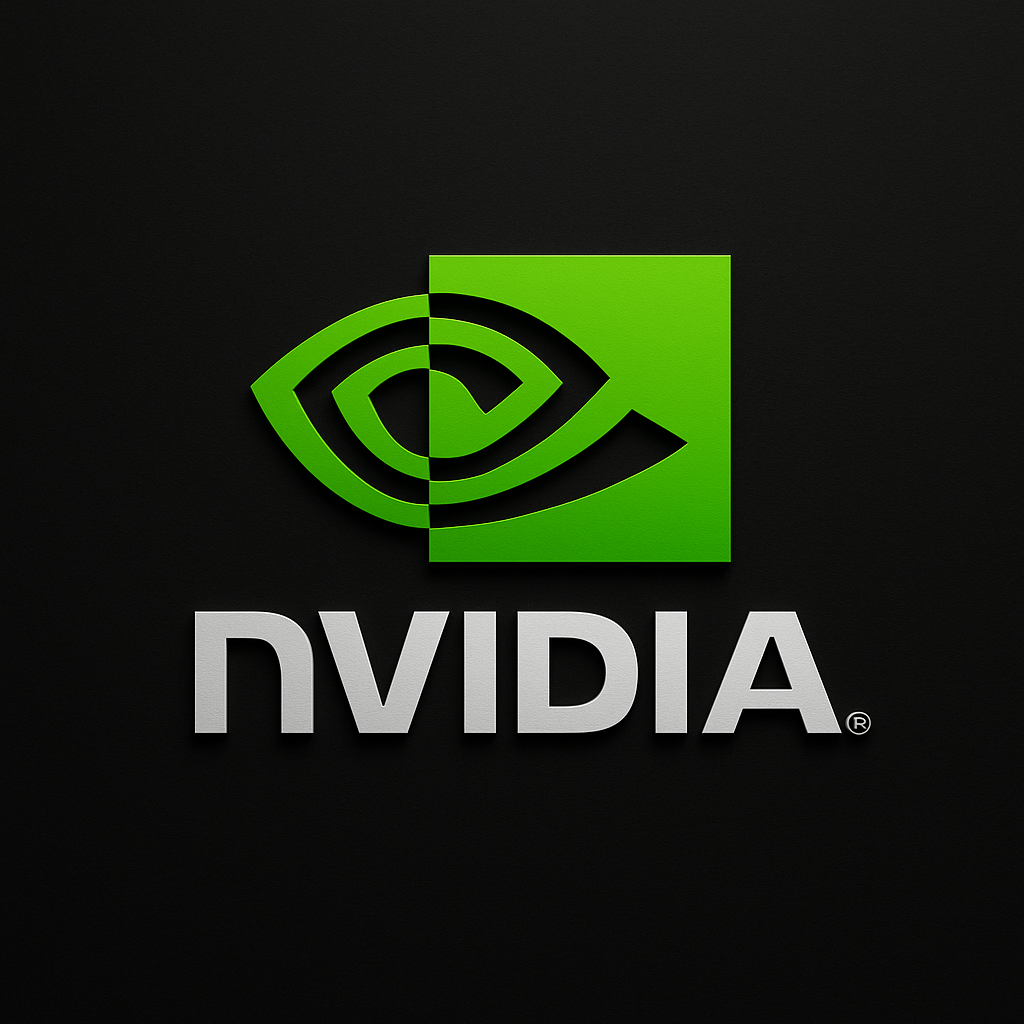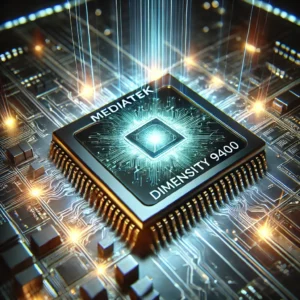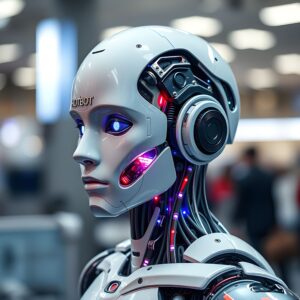
NVIDIA’s Strategic Move
In a groundbreaking decision, NVIDIA has announced that it will begin manufacturing AI supercomputers in the United States for the first time in the company’s history. As artificial intelligence (AI) technologies continue to evolve and become integrated into every aspect of modern life, the need for powerful computing infrastructure capable of handling vast amounts of data and complex algorithms has never been greater. This move is not just significant for NVIDIA but also for the entire U.S. tech industry. It represents a new chapter in the development of AI technologies and solidifies the U.S.’s leadership role in the global AI race.
The U.S. manufacturing initiative follows a series of strategic decisions that position NVIDIA as a key player in the high-performance computing sector. With advancements in AI supercomputers, the company is ensuring that it remains competitive in a fast-evolving market, while helping to drive the next generation of innovations across industries like healthcare, transportation, finance, and beyond.
Chapter 1: What Are AI Supercomputers?
AI supercomputers are the backbone of modern artificial intelligence applications. These are specialized computing systems designed to process vast amounts of data at unprecedented speeds, enabling the training of deep learning models, running simulations, and performing tasks such as natural language processing, image recognition, and predictive analytics.
Unlike traditional computers, which are optimized for general-purpose computing tasks, AI supercomputers are designed to handle the immense demands of AI workloads. These systems require powerful GPUs (Graphics Processing Units) and specialized hardware that can work together in parallel to process and analyze massive datasets. They are typically used by large research institutions, tech companies, and government agencies for complex tasks, such as weather forecasting, drug discovery, and autonomous vehicle development.
For years, leading AI supercomputers have been deployed in data centers across the globe, but the manufacturing of these systems has been concentrated outside the U.S., with many of the key components being sourced from Asia. NVIDIA’s decision to bring AI supercomputer manufacturing to the U.S. is a response to the growing demand for more secure and reliable production capabilities, while also reinforcing the country’s technological leadership.
Chapter 2: The Need for AI Supercomputers in the U.S.
AI supercomputers are not just for research and development; they are critical to maintaining a competitive edge in the global technology race. In industries like autonomous driving, AI research, and cloud computing, AI supercomputers are essential for enabling real-time decision-making, optimizing processes, and solving highly complex problems.
One of the primary factors driving the demand for AI supercomputing in the U.S. is the increasing reliance on artificial intelligence across various sectors. From healthcare providers using AI to diagnose diseases to financial institutions leveraging AI for fraud detection and risk analysis, the applications of AI are expanding rapidly. These advancements require powerful, scalable infrastructure that can support the massive data sets and complex algorithms necessary for AI processing.
NVIDIA has long been a leader in the AI space, and its decision to manufacture AI supercomputers in the U.S. is a natural extension of its commitment to helping organizations harness the power of AI. By building supercomputers domestically, NVIDIA aims to ensure the security of critical AI infrastructure and reduce dependency on foreign suppliers.
Chapter 3: Technological Innovations Behind AI Supercomputers
At the heart of every AI supercomputer is powerful hardware that has been optimized for specific tasks. NVIDIA’s new American-made AI supercomputers will integrate some of the company’s most advanced technologies, including cutting-edge GPUs, processors, and memory systems. These innovations are the key to achieving the immense computing power needed to run AI workloads at scale.
Next-Generation GPU Technologies
NVIDIA’s GPUs are the backbone of its AI supercomputers. The company’s latest GPUs, such as the A100 Tensor Core, have revolutionized AI processing by providing exceptional performance in machine learning and deep learning tasks. These GPUs are specifically designed for parallel processing, allowing them to handle thousands of operations simultaneously. This is particularly important in the training of neural networks, where vast amounts of data need to be processed quickly and accurately.
NVIDIA’s upcoming AI supercomputers in the U.S. will feature even more advanced GPUs that will provide enhanced performance, greater energy efficiency, and support for more demanding AI workloads. The new GPUs will incorporate architectural advancements that improve performance per watt, making the supercomputers more sustainable while still delivering exceptional power.
AI and Quantum Computing Integration
Quantum computing represents another frontier for AI supercomputers. While quantum computing is still in its infancy, it holds the potential to revolutionize AI by enabling the processing of information in ways that classical computers cannot. By leveraging quantum bits (qubits), quantum computers can perform complex calculations exponentially faster than traditional computers, opening new possibilities for AI.
NVIDIA is already investing in quantum computing technologies. Its Quantum Computing SDK, alongside its AI supercomputing infrastructure, will allow for the seamless integration of quantum computing into future AI systems. This will enable more sophisticated AI models, capable of solving problems that are currently out of reach for even the most powerful classical supercomputers.
AI Workloads and Precision
AI supercomputers are designed to handle a variety of workloads, from training deep learning models to running complex simulations. To meet the demands of these workloads, the U.S.-manufactured AI supercomputers will feature processors that are capable of efficiently managing multiple types of tasks simultaneously.
Furthermore, advancements in precision will play a key role in the future of AI supercomputing. Precision is critical in tasks such as training AI models for applications in healthcare or finance, where even small errors can have significant consequences. NVIDIA’s Tensor Core processors are designed to handle high-precision calculations, ensuring that AI systems deliver accurate results even in the most complex scenarios.
Chapter 4: Economic and Job Market Impact
Job Creation in High-Tech Manufacturing
The decision to manufacture AI supercomputers in the U.S. will create thousands of jobs in high-tech manufacturing, research, and development. As NVIDIA builds new facilities to assemble and test these supercomputers, it will require a highly skilled workforce, including engineers, data scientists, and assembly line workers.
In addition to direct employment, the AI supercomputing industry will create opportunities in adjacent sectors, such as software development, cybersecurity, and infrastructure management. As the demand for AI technologies grows, more people will be needed to support the systems, ensuring that the U.S. workforce remains competitive in the global market.
Boost to the Local Economy
Local economies will also benefit from NVIDIA’s investment in U.S. manufacturing. Communities that host NVIDIA’s new supercomputer manufacturing plants will experience increased economic activity, including job creation, local spending, and infrastructure development. This economic activity will spill over into other sectors, such as retail, housing, and transportation.
The presence of a major tech company like NVIDIA will also attract other businesses and investors to the area, leading to the development of new tech hubs. This can stimulate innovation and entrepreneurship, fostering a vibrant ecosystem that benefits the region in the long term.
Strengthening the Semiconductor Industry
The semiconductor industry plays a critical role in the development of AI supercomputers. By bringing semiconductor manufacturing back to the U.S., NVIDIA’s move will help reduce the country’s dependence on foreign suppliers. This is particularly important in light of global supply chain challenges and geopolitical tensions that have underscored the need for more resilient domestic manufacturing capabilities.
NVIDIA’s decision to invest in U.S. semiconductor manufacturing will help ensure that the U.S. remains at the forefront of the global semiconductor race, which is crucial for maintaining the country’s technological leadership.
Chapter 5: The Future of AI Supercomputing in the U.S.
Technological Advancements on the Horizon
Looking ahead, the future of AI supercomputing in the U.S. is filled with exciting possibilities. As AI technologies continue to evolve, NVIDIA plans to expand its supercomputing offerings, incorporating more powerful GPUs and AI models into its infrastructure. This will enable AI systems to tackle even more complex problems and unlock new opportunities for industries around the world.
The integration of quantum computing into AI supercomputing infrastructure is one of the most exciting developments on the horizon. As quantum technologies mature, they will be integrated into NVIDIA’s supercomputers, providing a powerful tool for solving AI challenges that are currently beyond reach.
The Role of AI in Solving Global Challenges
AI supercomputers are not just tools for advancing technology—they are key to addressing some of the world’s most pressing challenges. From climate change to healthcare, AI can be leveraged to solve complex problems that require massive amounts of data and computational power. NVIDIA’s AI supercomputers will be at the forefront of these efforts, helping researchers develop solutions to global problems like disease prevention, sustainable energy, and environmental conservation.
Strengthening U.S. Technological Dominance
By manufacturing AI supercomputers in the U.S., NVIDIA is helping to ensure that the country remains a leader in global technology. As AI continues to shape the future of industries worldwide, the U.S. must remain at the forefront of these developments to maintain its competitive edge. NVIDIA’s investment in domestic manufacturing is a critical step toward ensuring that the U.S. remains a global leader in AI and high-performance computing.
NVIDIA’s decision to manufacture AI supercomputers in the U.S. marks a new era in the development of artificial intelligence technologies. By bringing supercomputer production to American soil, NVIDIA is not only ensuring the security and reliability of its products but also strengthening the U.S.’s position as a leader in AI and high-performance computing.
As AI continues to evolve and expand across industries, the role of AI supercomputers will become even more crucial. With its new American-made AI supercomputers, NVIDIA is poised to drive the next wave of technological advancements, helping to solve some of the world’s most complex challenges while fostering economic growth and job creation in the U.S.
Feel free to check out our other website at : https://synergypublish.com



